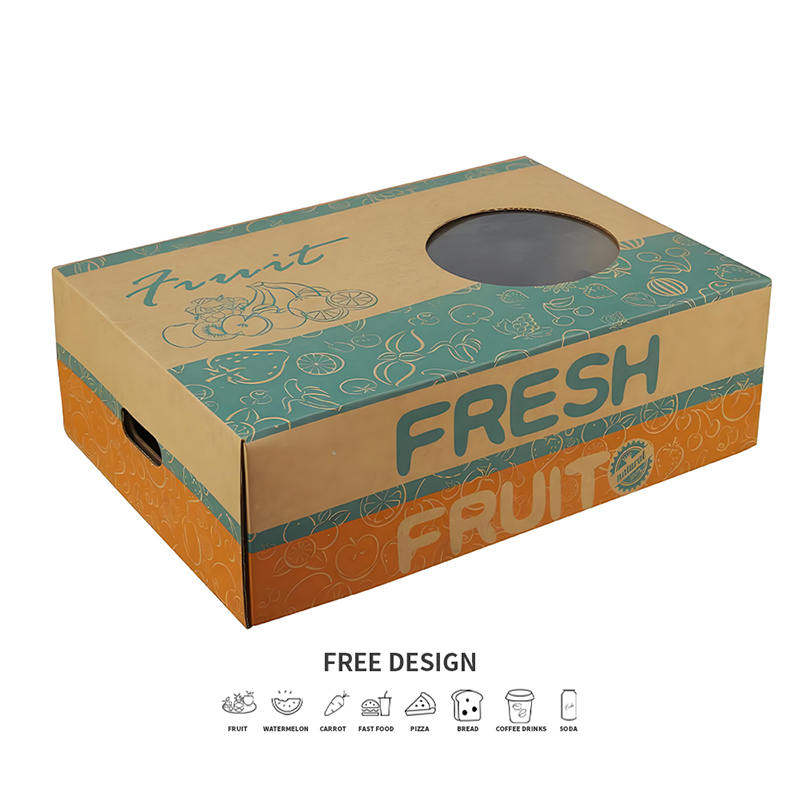Designing Custom Corrugated Boxes for Food Packaging
Aug 11, 2025
In the competitive food industry, packaging plays a critical role in protecting products, maintaining freshness, enhancing shelf appeal, and delivering brand messaging. Corrugated boxes have become a staple for food packaging due to their durability, versatility, and sustainability. However, designing custom corrugated boxes for food packaging requires careful consideration of multiple factors to meet the unique needs of different food products, comply with safety standards, and satisfy consumer expectations.
1. Why Choose Corrugated Boxes for Food Packaging?
Corrugated boxes consist of a fluted corrugated sheet sandwiched between two linerboards, providing excellent strength and cushioning. This structure makes them ideal for food packaging because:
Protection: They safeguard food products from physical damage during transit and handling.
Breathability: Corrugated material can be designed with ventilation to preserve freshness.
Customization: Easily shaped and printed to fit diverse food items and branding needs.
Sustainability: Made primarily from recyclable and biodegradable materials.
Cost-effective: Affordable to produce at scale with efficient supply chains.

2. Key Considerations When Designing Custom Corrugated Boxes for Food
a. Food Safety and Compliance
Food packaging must meet regulatory standards to ensure it doesn’t contaminate or degrade the food. When designing corrugated boxes:
Use food-grade liners or coatings (like wax or polyethylene) to provide moisture and grease resistance.
Ensure inks and adhesives are non-toxic and FDA-approved for food contact.
Avoid materials that may impart odors or flavors to the food.
b. Box Style and Structure
The design should complement the food type and its packaging requirements:
Regular Slotted Containers (RSC): Common for bulk or pre-packaged foods.
Die-cut Boxes: For uniquely shaped items, or those needing precise fit.
Partitioned Boxes: With inserts to keep fragile or varied items separated.
Ventilated Boxes: Include perforations to allow airflow, essential for fresh produce.
c. Size and Dimensions
Custom sizing ensures minimal excess space, reducing movement inside the box.
Proper fit helps maintain food integrity and optimizes shipping costs.
d. Strength and Durability
Choose the appropriate board grade (single-wall, double-wall, or triple-wall) based on product weight and handling conditions.
Incorporate reinforced corners or double flaps if extra protection is needed.
e. Printing and Branding
High-quality printing enhances product appeal on retail shelves.
Use vibrant, food-safe inks to display brand logos, nutritional information, and handling instructions.
Employ UV coating or lamination for moisture resistance and print durability.
3. Material Choices for Corrugated Food Packaging
Kraft Paper: Natural, biodegradable, and strong, commonly used as linerboard.
Waxed Corrugated Board: Provides moisture resistance, suitable for chilled or frozen foods.
Poly-coated Boards: For grease resistance, ideal for oily or greasy foods.
Recycled Materials: Can be used without compromising quality or safety.
4. Sustainability and Environmental Impact
Consumers increasingly prefer eco-friendly packaging. Designing with sustainability in mind includes:
Using recyclable, biodegradable materials.
Minimizing packaging size to reduce waste.
Designing boxes for easy flattening and recycling post-use.
Partnering with suppliers who adhere to sustainable forestry and production practices.
5. Case Studies and Applications
Fresh Produce
Ventilated corrugated boxes with perforations help extend the shelf life of fruits and vegetables by allowing air circulation and moisture escape.
Bakery and Confectionery
Boxes with grease-resistant coatings and secure closures keep baked goods fresh while preventing grease stains.
Frozen Foods
Waxed or poly-coated corrugated boxes protect frozen items from moisture ingress and structural damage during cold chain logistics.
6. Challenges and Solutions
Moisture Management: Using appropriate coatings and liners can protect the box and food.
Maintaining Structural Integrity: Selecting the right flute size and board grade balances cushioning and strength.
Cost vs. Customization: Balancing design complexity with manufacturing costs requires strategic planning.
7. Conclusion
Designing custom corrugated boxes for food packaging is a multi-faceted process that blends material science, structural engineering, and marketing. A well-designed corrugated box not only protects and preserves food but also enhances brand visibility and aligns with sustainability goals. By carefully considering food safety, structural requirements, and consumer preferences, manufacturers can create packaging that delivers both functional and aesthetic value in the food supply chain.




 English
English  русский
русский  Français
Français  Español
Español  عربى
عربى 

